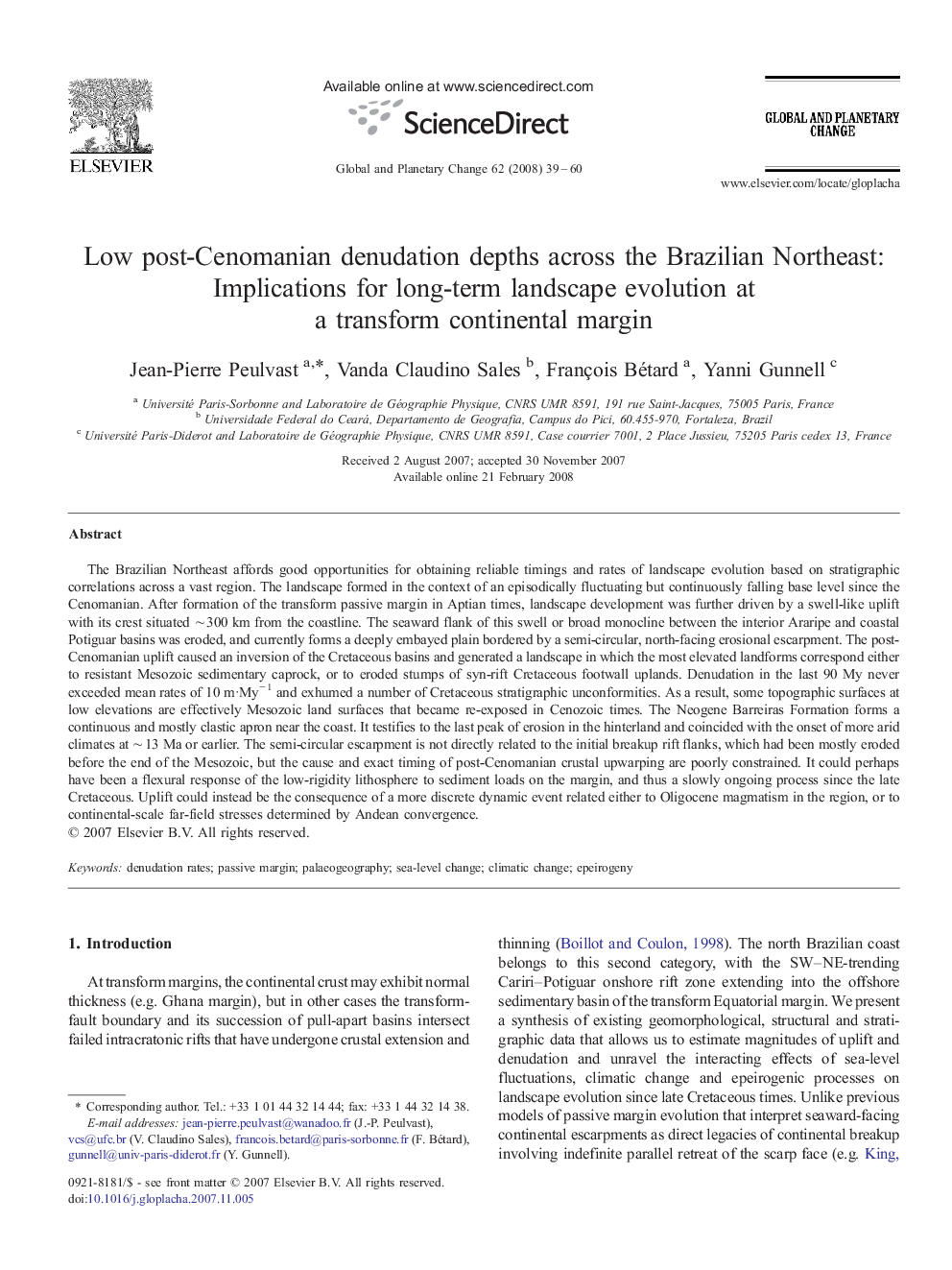| کد مقاله | کد نشریه | سال انتشار | مقاله انگلیسی | نسخه تمام متن |
|---|---|---|---|---|
| 4464209 | 1621721 | 2008 | 22 صفحه PDF | دانلود رایگان |

The Brazilian Northeast affords good opportunities for obtaining reliable timings and rates of landscape evolution based on stratigraphic correlations across a vast region. The landscape formed in the context of an episodically fluctuating but continuously falling base level since the Cenomanian. After formation of the transform passive margin in Aptian times, landscape development was further driven by a swell-like uplift with its crest situated ∼ 300 km from the coastline. The seaward flank of this swell or broad monocline between the interior Araripe and coastal Potiguar basins was eroded, and currently forms a deeply embayed plain bordered by a semi-circular, north-facing erosional escarpment. The post-Cenomanian uplift caused an inversion of the Cretaceous basins and generated a landscape in which the most elevated landforms correspond either to resistant Mesozoic sedimentary caprock, or to eroded stumps of syn-rift Cretaceous footwall uplands. Denudation in the last 90 My never exceeded mean rates of 10 m·My− 1 and exhumed a number of Cretaceous stratigraphic unconformities. As a result, some topographic surfaces at low elevations are effectively Mesozoic land surfaces that became re-exposed in Cenozoic times. The Neogene Barreiras Formation forms a continuous and mostly clastic apron near the coast. It testifies to the last peak of erosion in the hinterland and coincided with the onset of more arid climates at ∼ 13 Ma or earlier. The semi-circular escarpment is not directly related to the initial breakup rift flanks, which had been mostly eroded before the end of the Mesozoic, but the cause and exact timing of post-Cenomanian crustal upwarping are poorly constrained. It could perhaps have been a flexural response of the low-rigidity lithosphere to sediment loads on the margin, and thus a slowly ongoing process since the late Cretaceous. Uplift could instead be the consequence of a more discrete dynamic event related either to Oligocene magmatism in the region, or to continental-scale far-field stresses determined by Andean convergence.
Journal: Global and Planetary Change - Volume 62, Issues 1–2, May 2008, Pages 39–60